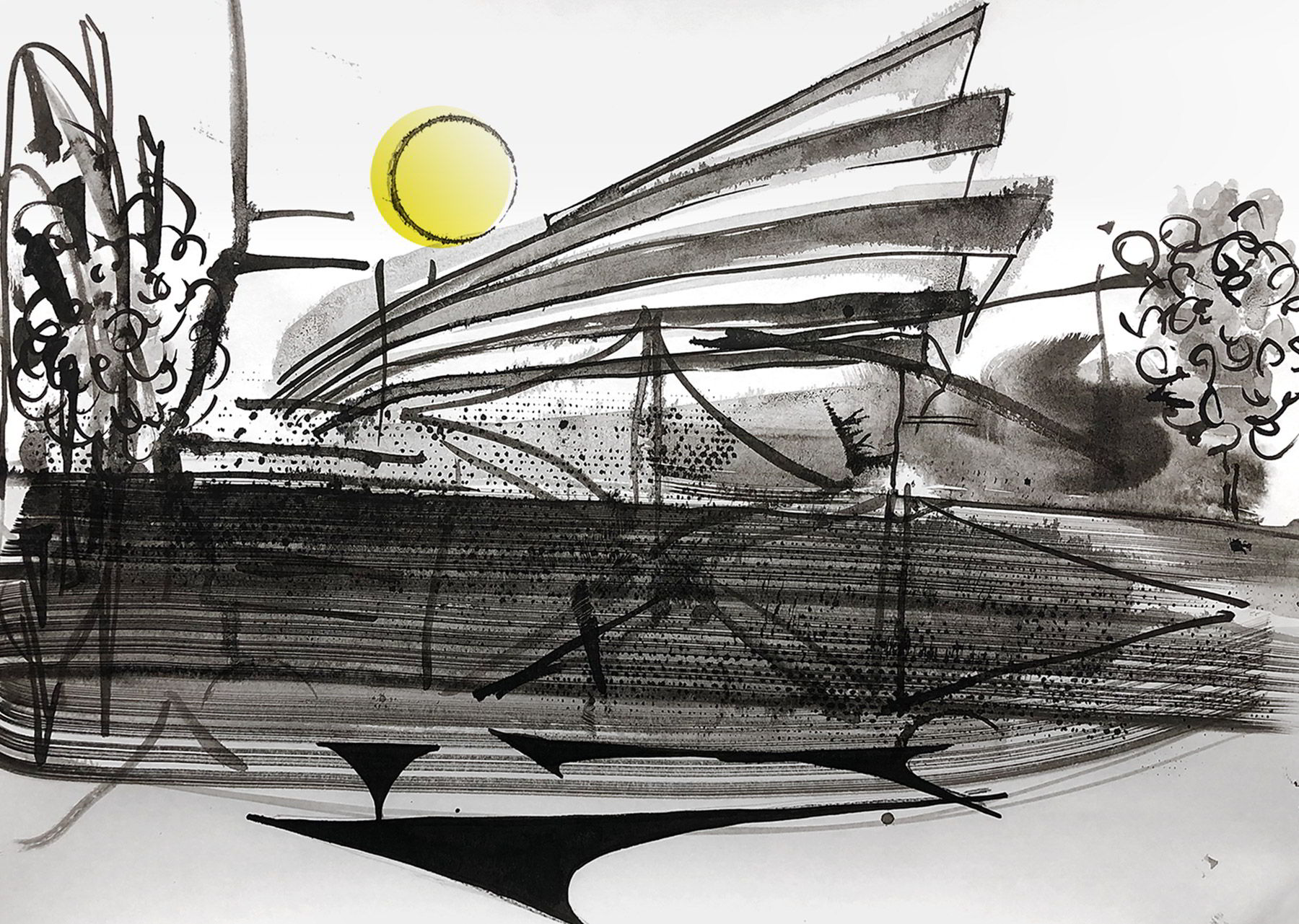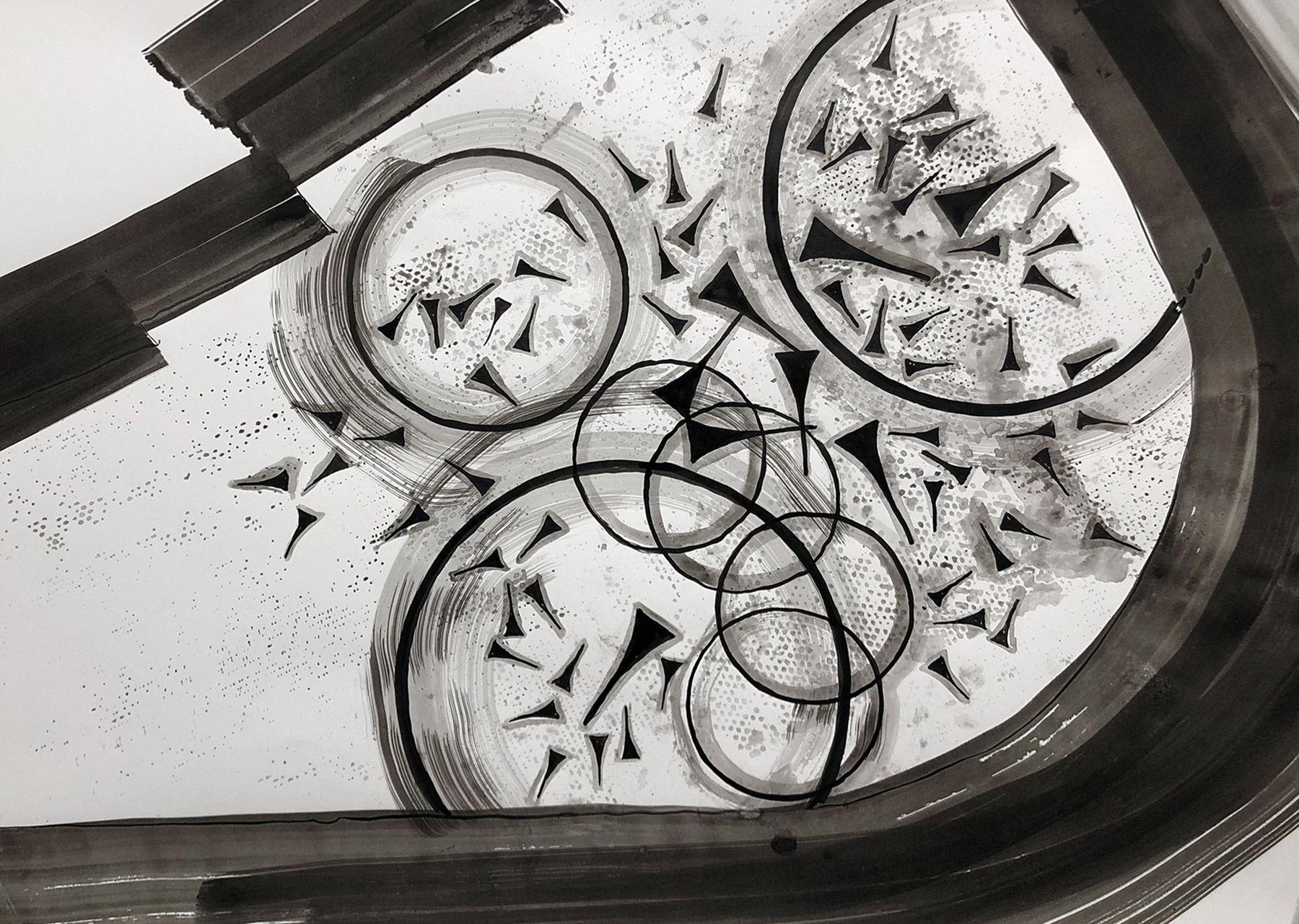Globe of Glass | Katja Davar


As contemporary concerns around climate change and energy efficiency become even more acute, it becomes clear that the collective experiment of fossil fuel-dependent economic growth has been catastrophic for both the human species, nonhumans and the environment.
In 2020, the artist Katja Davar won the competition for the site-specific art work for the Fraunhofer IEE new build in Kassel. Her proposal engaged with the Fraunhofer’s multifaceted and multidisciplinary research into various areas of energy futures and distribution.
Davar’s concept for the Fraunhofer-Institute IEE in Kassel incorporated the use the Mesopotamian symbol for sun as the central element in her marble mosaic. With this, Davar references the sustainable energy future being predominantly solar. Scattered around the sun symbol are individual cuneiform wedges forming a labyrinth. For Davar, the wedges have many meanings: they operate as a metaphor for progress, enlightenment, experimentation and invention. She uses the forecourt as an enormous canvas, drawing into the ancient basalt with brilliant white Lasa marble.
Davar has worked with elements of cuneiform for many years. Cuneiform is the first known form of writing to exist, and started around 3300 BC in the Ancient Near East. The very idea of writing is one of humankind’s greatest achievements. It is where prehistory ends and history begins. The word cuneiform comes from the Latin cuneus ‘wedge’ and simply means ‘wedge shaped’. The cuneiform writing system is not an alphabet and it does not have letters, instead it used characters to write words or parts of words. Cuneiform was used primarily in Mesopotamia which is a catch –all term for the area that is now primarily Iraq and eastern Syria.
Another important inspiration and source for Katja Davar’s work is Virginia Woolf’s essay, The Sun and the Fish. Here Woolf deals with the mesmerizing total eclipse of the sun in 1927. She writes: the skies‘’…became darker and darker as at the beginning of a violent storm; the light sank & sank: we kept saying this is the shadow; & we thought now it is over – this is the shadow when the light went out. We had fallen’’.
Through the text we have the privilege of re-enacting a rare feat of nature, a collective planetary happening. Woolf realised, through witnessing the eclipse, that the eye, or our ‘sight’, is antiquity and it is futurity. The short essay offers an oblique and open-ended reading of the fate of civilization, highly relevant for our complex times. In particular, Woolf’s description of the darkness ‘’…We had fallen’’, feels alarmingly prophetic if the climate crisis is not solved in the near future. In Katja Davar’s mosaic, there are several radial forms built in marble that reference the planetary movement of an eclipse. The title of the work, Globe of Glass is a quotation from Woolf’s text and references the fragility of our planet.
Globe of Glass is an Immersive labyrinthine drawing through which one can walk and play, jump, skip, and hop. It is an aesthetic interpretation and visualization of the mutual dependence and influence of human beings and their surroundings. Just as the Fraunhofer Institute conducts research with an all-embracing ecological focus, so Davar proposes a drawing that utilizes a part of the earth, as a canvas making the necessary connection between the particular and the universal, the concrete and the abstract.